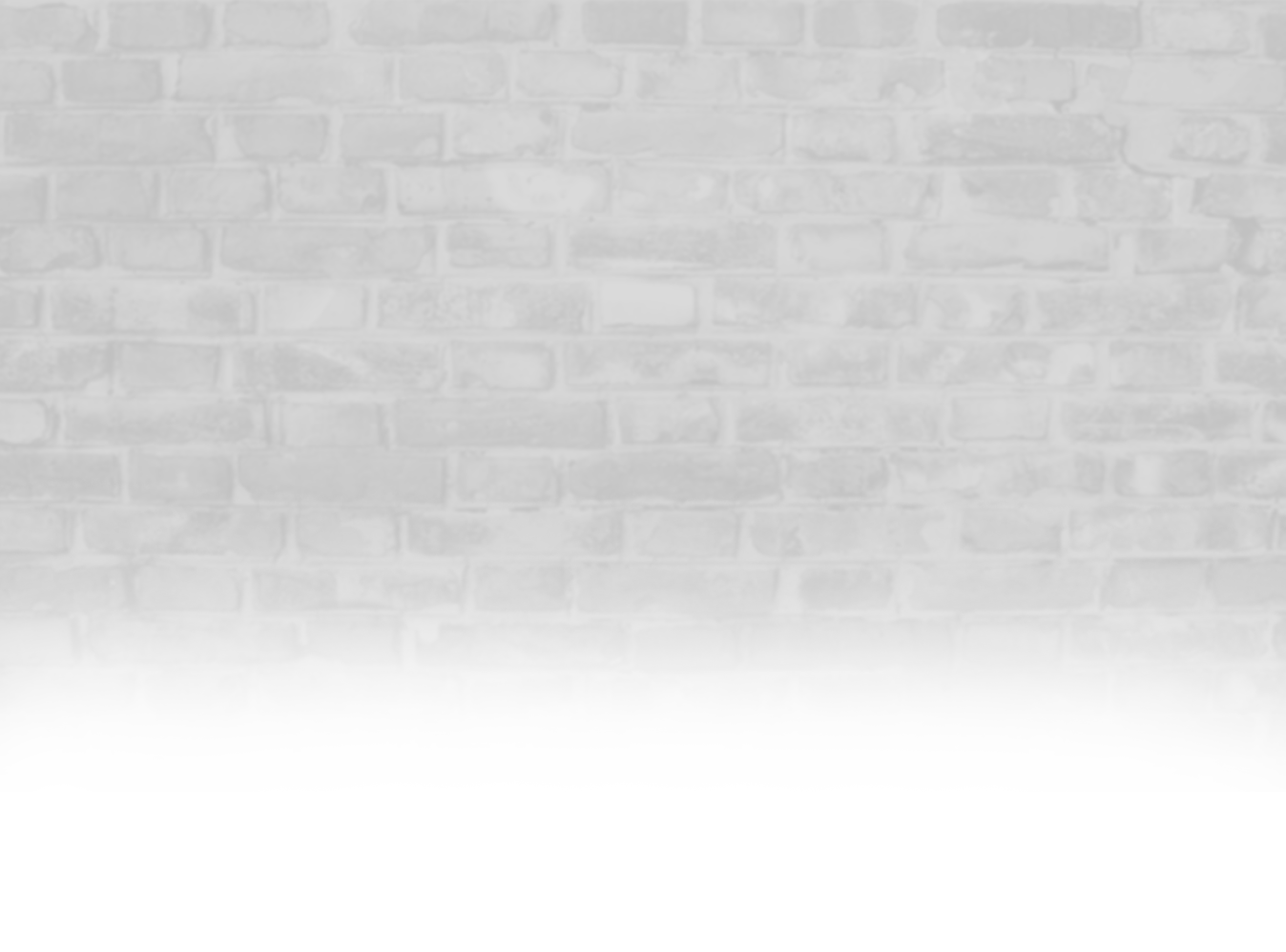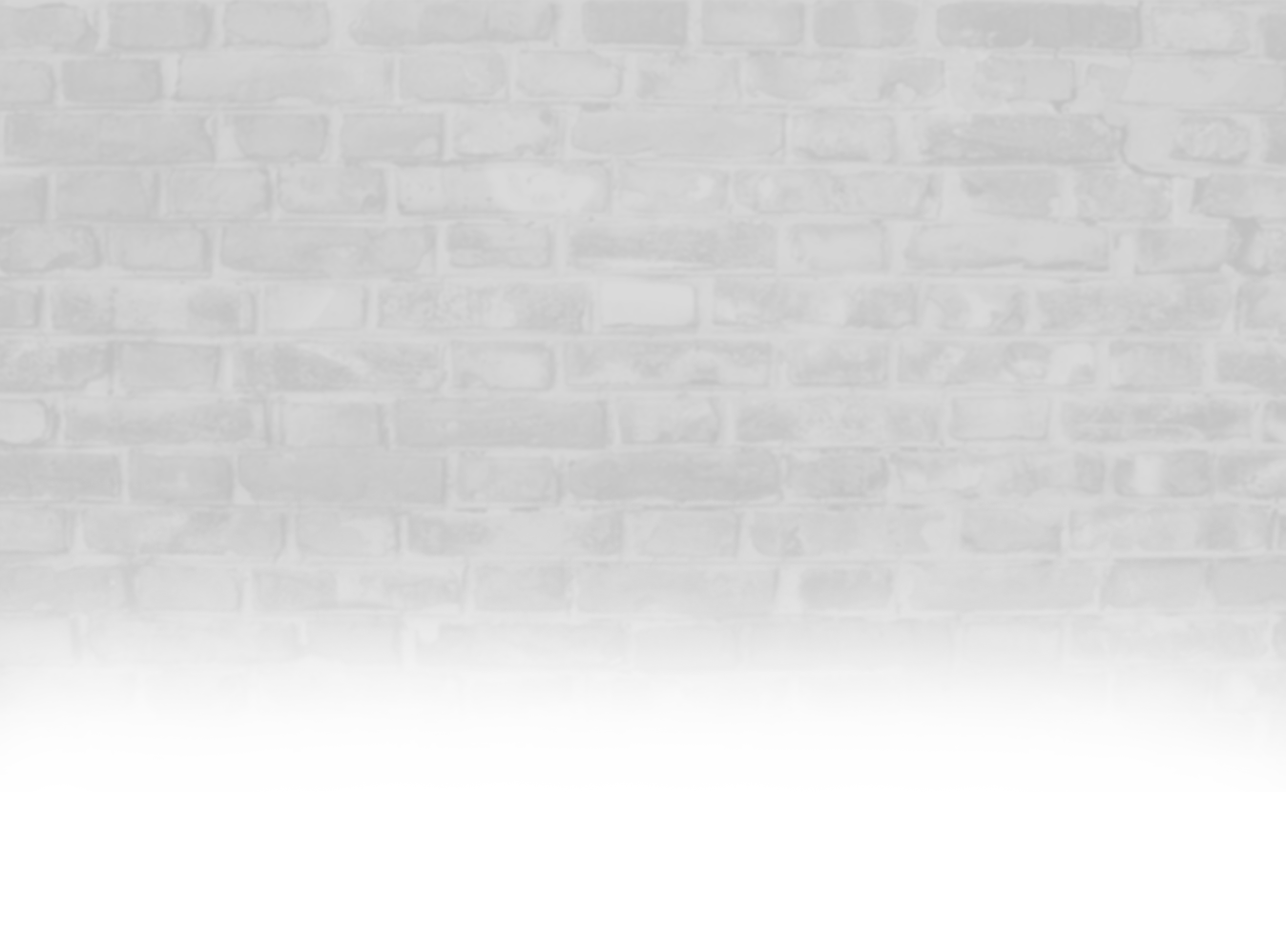Termites & Borers
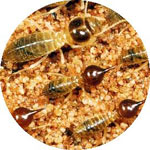
Termite Information Guide
Termites or as they are often called White Ants are a common and serious pest to homeowners. The CSIRO reports that termites cause more damage than fire and that more than one in five houses had termite damage with an estimated damage bill of more than $100 million every year.
The Termite Colony
The number of castes that make up a Termite colony, are a king, queen, worker, soldier, reproductives and alates. All of these castes contribute in individual ways to growth of a colony. White ant colonies can grow up to 1 million termites in each.
The Queen can lay over 1000 eggs per day and can live for up to 25 years. She and the King initiate the colony and produce most of the eggs until the colony matures. When the Queen dies a replacement from the chosen reproductives takes her place.
A soldiers’ function is to protect the colony from intruders. They are males and females whose reproductive organs and sexual characteristics have not yet formed.
Worker castes are the primary locaters of the food source and feeders of the other members of the colony. Reproductives are the future Kings and Queens of colonies yet to be developed or replacements of existing if they die. They are more susceptible to the outside environment than other castes. When fully developed they acquire wings and swarm in the warmer months leaving their parent colony. These new colonies are usually set up in trees or where moisture and food is evident.
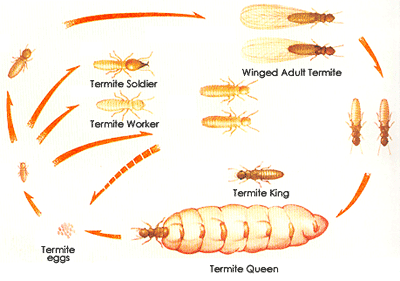
The prime source of food for termites is cellulose which is predominantly found in timber. Termites can eat dried timber, rotting timber and living trees. Termites are extremely tenacious in finding timber even though those scouting for food are blind. If timber is present, termites will find it.
Common Termites
There are 2 main species of termites in Brisbane that cause the most damage to sound timber. Coptotermes and Schedorhinotermes.
Coptotermes (Acinaciformis)
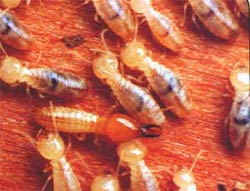
Coptotermes is considered to be the most destructive termite in Australia mostly because of the fact that is present over the entire mainland. The nests can be mound type in Queensland but the most common nest site is in tree stumps/living trees, in filled patios or sleeper retaining walls.
Soil contact is desirable but not essential, provided that there is a moisture supply for the colony. For example a leaking tap in the wall behind a shower. Of particular concern is the fact that this species has been known to cause electrical fires by shorting out wiring. For example workings behind a power point. Coptotermes soldiers measure up to 6mm long with tear-shaped yellowish heads and dark slender tapering mandibles without visible teeth.
Their habit of exuding a drop of milky fluid from the frontal gland (on the top of the head) when disturbed, offers a sure means of identifying living specimens. Soldiers are relatively numerous in the colonies and when the galleries are broken open they will usually appear promptly.
Schedorhinotermes
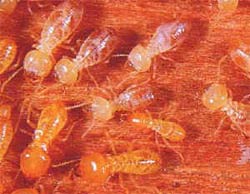
These are the most common termite found around Brisbane. These white ants Brisbane are a serious pest species that is capable of causing extensive damage to homes, fences, trees living and dead, retaining walls etc. The nests are often very difficult to locate, preferred locations include trees living/dead, Retaining walls under in-fill patio slabs, or under other concrete slabs.
Colonies can be very populous, consisting of many thousands of termites. The minor soldiers appear first in a developing nest, once the nest is well established the major soldiers appear. The appearance on the major soldier usually indicates the colony’s increasing potential for damaging timber in service.
Schedorhinotermes soldiers (major) are 5mm - 7mm long and have bulbous heads, the minor soldiers are about 2/3 the length of the majors, they have narrower heads and more slender mandibles.
This species of termite is very easy to disturb, if workings are broken open ect-the termites will often retreat deep into affected timbers or back to the nest. This can have an adverse effect on treatments, as such and suspicious activity should be left alone until it can be inspected.
Hetrotermes
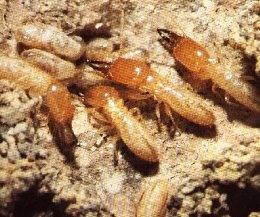
Found throughout Australia this species of termites is not considered to be a risk to homes. Instead, these white ants often attack fences, decking, posts and poles where some from of decay is already present.
This species do not build mounds, but have very small colonies adjacent to stumps, logs or on the ground, especially near rotting wood. Soldiers are 3.5mm - 7mm long with long rectangular heads, and no obvious teeth on their curved mandibles.
Nasuitermes
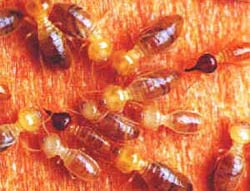
Whilst not common in Brisbane this is a species that can cause damage to sound timber. They build arboreal nests (mound on the side of a tree) commonly on Ironbark and Stringybark trees. They often attack fence posts and power poles but can enter homes esp in homes built in native bushland blocks. Soldiers are 5-7 mm long with a head that is drawn out to a point.
Microcerotermes

A very common termite found around gardens and old fences they are 4.5mm - 5.5mm long Nests are built on the ground as a small mound or on the side of a living or dead tree. Can enter homes but damage is mostly limited to trim timbers of gyproc it is not an important economic pest.
If you find Termite activity! Do not disturb them just call us! Our experienced pest control services include inspections and treatments of properties affected by termites and white ants Brisbane.
You should have regular termite inspections of all timber and possible termite entry points. We can identify timber problems and advise you of the solutions. If you find termite damage in your home, call us and do not disturb the termites. We will investigate the size and nature of the infestation and advise you on the available options.
Borers
Brisbane residents face a few different types of borer pests.
Powderpost Beetles
The powderpost beetle is one of the most important timber borers found in Queensland. The larvae can reduce susceptible timber to a fine, flour-like powder. The beetle can attack seasoned timber causing significant structural damage, often with considerable financial consequences.
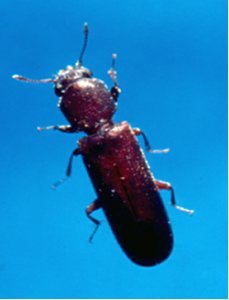
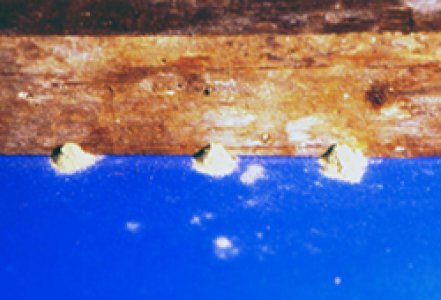
Scientific Name
Lyctus Brunneus
Description
The adults are up to 7mm long, dark-brown, shiny, flattened and elongated. Adults have a distinct head and the terminal segments on their antennae appear to be clubbed. The larvae are cream-coloured with brown head and jaws and three pairs of small jointed legs. Larvae, on hatching, are about 0.5mm long and straight-bodied but later become C-shaped.
Distribution
Powderpost beetle attack in susceptible timber is very common in tropical and subtropical climates in Queensland.
Life Cycle
Female beetle lays up to 70 eggs in sapwood containing starch, which is essential for larval growth. Eggs hatch after 14 days and the larvae create tunnels along the wood grain as they feed. Larvae may take from 2-12 months to mature, depending on temperature, humidity and food supply. Fully-grown larvae tunnel towards the surface and create oval cells within which they pupate. Mature beetles emerge after 2-3 weeks through circular holes (1-2 mm diameter), creating small piles of frass on the timber surface. Re-infestation is common for up to five years after tree-felling, until the food resource is depleted.
Damage
Powderpost (and all Lyctine) beetles attack only the sapwood of certain hardwoods and do not attack softwoods. Susceptible timbers must contain enough starch to nourish the developing larvae. The heartwood is never infested, although adults may emerge through it. Most infestations occur in logs or sawn timbers drying at the saw-mill. Infestation may not be noticed until the timber is in-service and adults begin to emerge. Infested timber contains galleries packed with fine, powdery frass.
The infested area may be reduced to powder within a shell of wood, perforated by emergence holes. Small piles of smooth, floury frass may be found outside the timber. Infestation may occur anywhere where susceptible timber has been used (for example, in subfloor areas, living space, roof space, or in furniture and artefacts). In new houses, emergence holes may appear in the lining materials (for example, in plasterboard and paneling) and joinery. Such holes are made by adults emerging from the hardwood framing beneath.
Queensland Pine Beetle
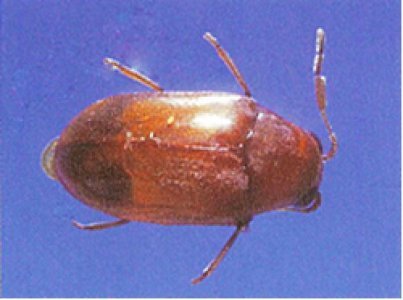

The Queensland pine beetle is a small native beetle and a pest of hoop pine timbers. There are about 1100 species of Anobiid beetles (Family Anobiidae) world-wide, but only about 200 of these occur in Australia. In Queensland, four species of Anobiid may be found in or around buildings. The Queensland pine beetle and the common furniture beetle, a native of Europe, are of economic significance, while the pine bark Anobiid and the cigarette beetle are of minor importance.
Changes to building practices have decreased the risk of attack to timber-in-service and reports of damage have become less frequent. The Queensland pine beetle is a small native beetle and a pest of hoop pine timbers.
There are about 1100 species of Anobiid beetles (Family Anobiidae) world-wide, but only about 200 of these occur in Australia. In Queensland, four species of Anobiid may be found in or around buildings. The Queensland pine beetle and the common furniture beetle, a native of Europe, are of economic significance, while the pine bark Anobiid and the cigarette beetle are of minor importance.
Scientific Name
Calymmaderus Incisus
Description
The adult beetle is oval in shape, about 3mm long, 1.5mm wide and shiny reddish-brown.The antennae terminate in a three-segmented club. The body surface is covered in fine hairs and numerous minute punctures, which are not discernible to the eye. The legs can be tightly folded against the body. The eggs are white, spherical, 0.4mm in diameter and just visible. The larva is soft-bodied, clothed with numerous fine hairs, curved, wrinkled, and creamy white with dark-brown mandibles.When fully grown the larva measures 4-5mm in length and 1.5mm wide. The pupa is soft, oval, creamy-white and measures 3.0mm - 3.5mm in length and 1.5mm wide.
Distribution
It is a small native beetle widespread in south-eastern Queensland . Previously, it has caused significant damage to timbers only within the area limited by Murwillumbah (New South Wales) in the south, Bundaberg in the north and west to the Great Dividing Range.
Lifecycle & Habits
Live adults are found only from October to February and live for up to four weeks. Eggs are laid in cracks of susceptible timber and larvae hatch in a few weeks. Larvae can burrow long distances in the host timber and only the larval stage is responsible for destruction of timber. Tunnels run with and across the grain, giving a honey-combed appearance. The tunnel is loosely packed with frass, which, if viewed under a lens, is seen to consist of cigar-shaped pellets made up of the chewed wood. When rubbed into the palm of the hand, the frass is fine and gritty, quite distinguishable from the frass of the powderpost beetle, Lyctus, which is soft and silky.
Frass is sometimes ejected in small amounts through flight holes. Before pupating, the larva moves closer to the surface and constructs a pupal chamber. The development period for larvae is usually three years. Mature larvae pupate and adults emerge leaving a circular 2 mm hole in the timber surface. Painted surfaces or wall sheeting materials may be penetrated during emergence. It is a very slow working insect that may take many years to cause extensive damage.
Damage To Timber
Queensland pine beetle is a pest of susceptible hoop pine sapwood and rarely attacks other timbers. It attacks exposed (without paint or varnish finish), susceptible wood in housing and, less commonly, in furniture. Attack is most serious in old homes of more densely populated areas. Susceptible timber, if left untreated, will be re-infested until it is completely honeycombed and has lost most of its strength.
Beetles are most commonly found attacking hoop pine floors and walls, but are rarely found in roofing timbers. Typically, only some boards, or sapwood areas within boards, are attacked.
Adults emerge mainly from the underside of floors, so that boards which appear quite sound from the top may be riddled with holes underneath. Larvae can reduce susceptible timber to gritty, cigar-shaped pellets. In very old structures, it is likely that any infestation has died out naturally as the susceptible material was exhausted. In these structures painted wall boards often have a dimpled surface, with no new holes. This indicates an extinct infestation.
Furniture Beetle
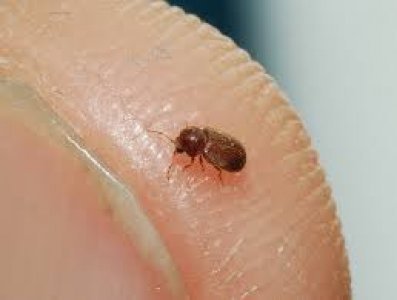

The common furniture beetle is an introduced pest of exotic pine and some hardwood timbers and is found primarily in imported furniture and occasionally pine timber buildings in Queensland. There are about 1100 species of Anobiid beetles (Family Anobiidae) worldwide, but only about 200 of these occur in Australia.
In Queensland, four species of Anobiid may be found in or around buildings; the Queensland pine beetle and the common furniture beetle, a native of Europe, are of economic significance, while the pine bark Anobiid and the cigarette beetle are of minor importance.
Scientific Name
Anobium Punctatum
Description
The adult is about 4 mm long and usually chocolate brown with reddish-brown legs. The head is concealed beneath the hooded (cowl-like) Prothorax and the antennae end in a three-segmented club. The beetle is covered with fine yellowish hairs and has longitudinal rows of pits on the forewings.
The adult is larger, more rectangular and not shiny like the Queensland pine beetle; microscopic examination is usually required to distinguish between the two species. The characteristic shape of the head and Prothorax readily distinguish the common furniture beetle from the powderpost beetles, Lyctus species.
The eggs are ovoid and easily seen. The larva is greyish white with a gold-brown head, chestnut-brown mandibles and is covered with fine hairs. The larva is normally hook-shaped, but curls into a tight ball when removed from its tunnel.
Damage To Timber
It commonly attacks pine timbers, particularly those which have been in service for at least 20 years. It will attack hardwoods such as English oak and infestations have also been recorded from spotted gum. Both the sapwood and the heartwood of some timbers can be infested. Radiata pine in New Zealand is very susceptible and this has led to mandatory immunisation when it is used for building construction or furniture.
In Australia there have been very few examples of attacks on Radiata Pine, despite the widespread use of this timber - the reason for this anomaly is unclear. Attacks in buildings are generally heaviest in the damper areas including cellars, flooring, skirting boards and outbuildings.
Our team has the best treatments for borers, termites and white ants Brisbane has to offer.
Life Cycle
Powderpost (and all Lyctine) beetles attack only the sapwood of certain hardwoods and do not attack softwoods. Susceptible timbers must contain enough starch to nourish the developing larvae. The heartwood is never infested, although adults may emerge through it. Most infestations occur in logs or sawn timbers drying at the saw-mill. Infestation may not be noticed until the timber is in-service and adults begin to emerge. Infested timber contains galleries packed with fine, powdery frass. The infested area may be reduced to powder within a shell of wood, perforated by emergence holes.
Small piles of smooth, floury frass may be found outside the timber. Infestation may occur anywhere where susceptible timber has been used (for example, in subfloor areas, living space, roof space, or in furniture and artefacts). In new houses, emergence holes may appear in the lining materials (for example, in plasterboard and paneling) and joinery. Such holes are made by adults emerging from the hardwood framing beneath.


